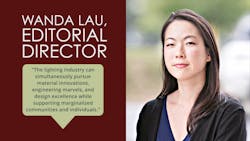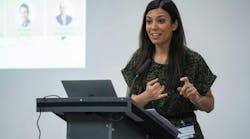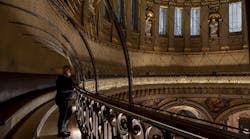As I write this in between meetings at LightFair, a buzz of energy surrounds me. With more than 10,600 registrants and 325 exhibitors, LightFair brought together industry leaders eager to see and experience technologies and products in person with manufacturers eager to showcase their new capabilities and provide assurances that lead times are at or almost back to pre-pandemic times.
I was excited to hear several companies expressing interest and enthusiasm for serving the everyday customer without construction, retrofit, and maintenance budgets in the multiple millions of dollars. Their projects include Class B and C properties, public facilities, affordable housing developments, and industrial and distribution centers — which together comprise a sizeable portion of our building stock.
At the same time, as we stroll in the comforts of New York’s Javits Center, we are within view of a sea of people who rarely or never experience high-quality, controllable, and beneficial lighting. This includes third-shift and behind-the-scenes workers, residents of outdated housing, students in underfunded school facilities, incarcerated individuals, and people without housing.
What can the lighting community do? A lot, said Edward Bartholomew, Lya Osborn, and Mark Loeffler during their LightFair presentation “Light + Justice Indoors.” The community can advocate for quality lighting standards for vulnerable populations; design environments that engage and empower end users in front- and back-of-house spaces celebrate excellence in equitable design; and pursue low-bid, public projects — which Loeffler noted can generate a profit in addition to the priceless joy of seeing communities recognize and embrace how quality lighting can improve their daily lives.
And let us not forget to take care of vulnerable populations within the lighting community. Last spring, Alana Shepherd, lighting designer and founder of the North American Coalition of Lighting Industry Queers, asked for support for the LGBTQ+ community in her essay, “Industry needs to light the way to equity.” At that time, more than 200 proposed bills targeting the rights of LGBTQ+ members were moving through state legislatures. In 2023 alone, the number of proposed bills aimed specifically at the transgender community has soared to more than 500, according to the Trans Legislation Tracker.
Today, before Shepherd can consider project RFPs or speaking invitations, she literally researches which personal rights and liberties she will lose as she flies or drives through different states and cities. The parallels to Victor Hugo Green’s The Green Book are haunting.
The lighting industry can simultaneously pursue material innovations, engineering marvels, and design excellence while supporting marginalized communities and individuals. These are mutually beneficial goals for not just your company, customers, and peers, but also for all of humankind.
WANDA LAU is editorial director of LEDs Magazine, Architectural SSL, and Smart Buildings Technology. She previously served as executive editor of Architect magazine and worked for a decade in the architecture, engineering, and construction industry.
Follow our LinkedIn page for our latest news updates, contributed articles, and commentary, and our Facebook page for events announcements and more. You can also find us on Twitter.





